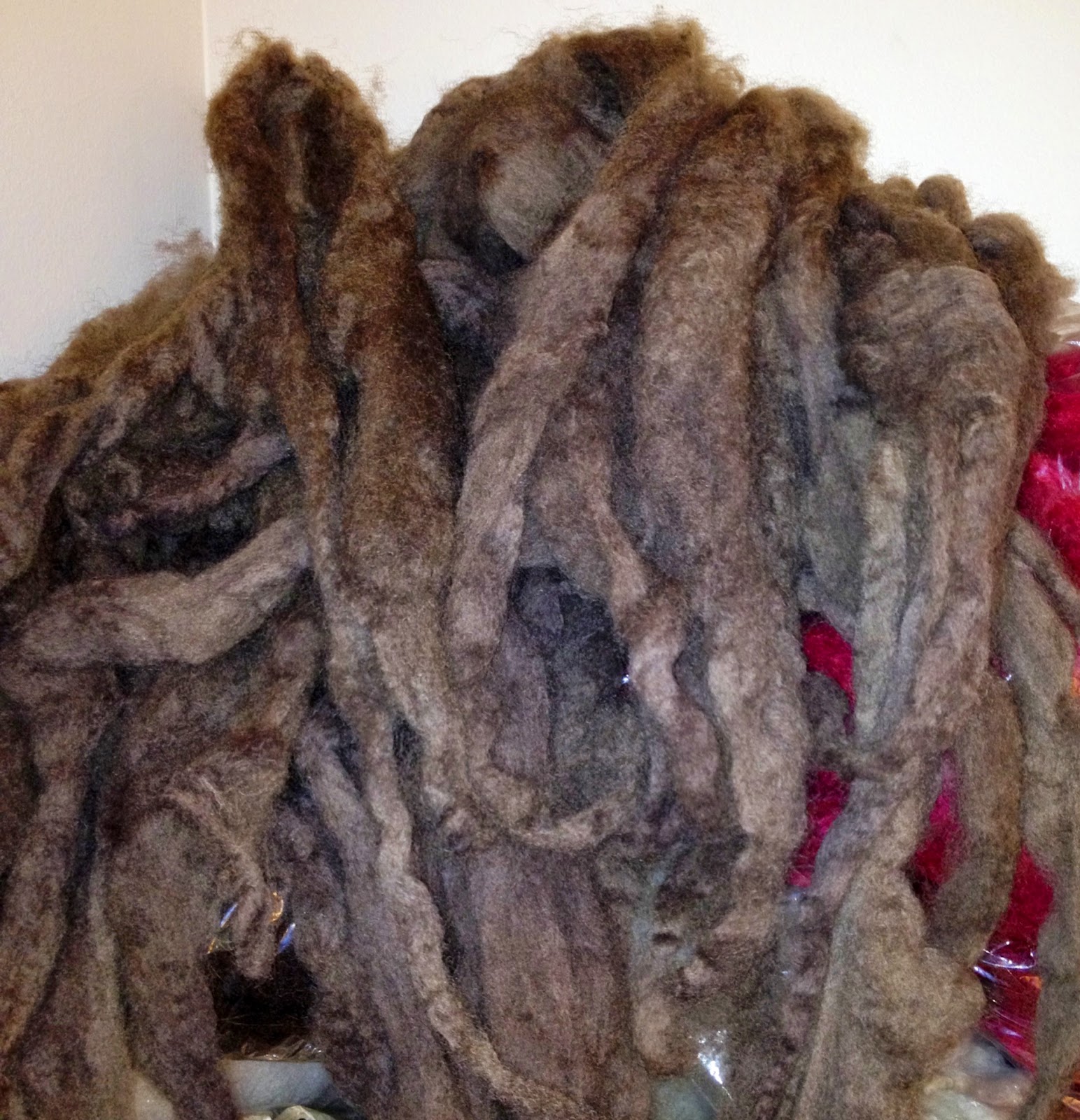The milkweed plant produces a fiber that can be used by spinners. Fibers from hemp, flax, dogbane, milkweed and nettle have been used for thousands of years to produce textiles, cordage, netting, etc.
I've been wanting to try my hand at getting fibers from milkweed, processing them, and spinning them. I finally had the time to give it a try, so I went to glean a few stalks from an area that I know had milkweed growing last summer.
I gathered around twenty or so stalks that had been sitting in situ after dying off last fall. If you gather milkweed and nettle in the early spring, after the dead stalks have been sitting out all winter, it saves you the trouble of retting.
The stalks have a pithy core, with the fiber and the 'bark surrounding it. At this stage, after sitting out in the elements, the stalks break easily and it's easy to dislodge the pithy core from the bark/fiber layer. There are several YouTube videos that show this process for nettles.
Below, you can see the core to the left, and the bark/fiber layer peeling off to the right. The fibers are shiny and white:
After peeling the outer layer off of all of my stalks, I had a small pile of fibery bark:
So here's the problem, how to release the wonderful, white, shiny fiber from the thin layer of bark? I don't know. I'm sure there is a way. It might involve breaking it in a manner similar to breaking flax. I do have a flax break, but I wasn't sure the milkweed would stand up to the flax break. I may try that next time. What I ended up doing was carding the bark/fiber. Most of the bark is broken up and falls away, but the fiber is also broken, and not all of the bark is released. It was heart breaking to break all of that wonderful, long shiny fiber up. I will research/experiment with other methods next time.
So here is what the carded milkweed fiber looks like in a rolag:
I ended up with about 0.7 ounces of carded fiber from those twenty some-odd stalks:
I split that up so that I could spin two bobbins and ply them together. The spinning was challenging, it's not an easy fiber to spin in this condition, but I got it done. Here is the two-ply on the wheel:
I ended up with about 17 yards of sport-weight, two-ply yarn:
I washed the yarn vigorously with hot water and soap. I know that linen yarn benefits from washing in hot water, and even boiling with washing soda (which I've done with my own linen yarn). I'm sure that this would clean up and lighten up even more with such treatment, but after just a couple of vigorous washings, and letting it dry, I wound it into a center-pull ball for knitting:
Like linen, it's a bit on the stiff side, but softens up with washings, and I'm sure with wear, too.
So I ended up knitting a little swatch, about 2.5" x 4" in size:
I'll probably fold it over, add a crocheted edge while binding two sides together, and keep the top open to make a small pouch to hold my stitch markers.
This was an interesting process. I hope to find out how to extract the fibers without breaking them all up with carding. As it is, I think this yarn is not very strong - certainly not nearly as strong as linen. Hopefully, if I can figure out how retain a nice length on the fibers, I can make a prettier, stronger, and finer yarn from milkweed in the future.
Okay, here is the finished pouch:
It's small, but a nice size to hold stitch markers:
From plant to pouch took about a day and a half. Looking forward to repeating with hopefully even better results in the future.


















































